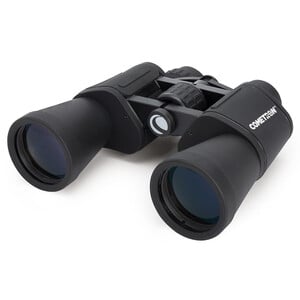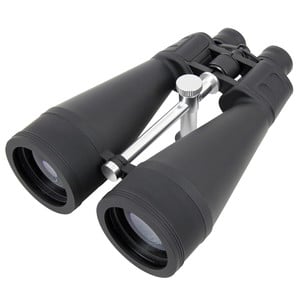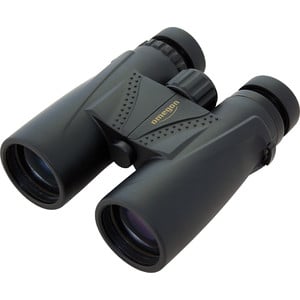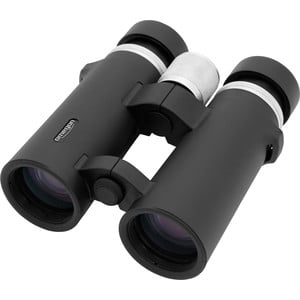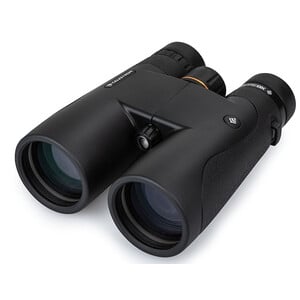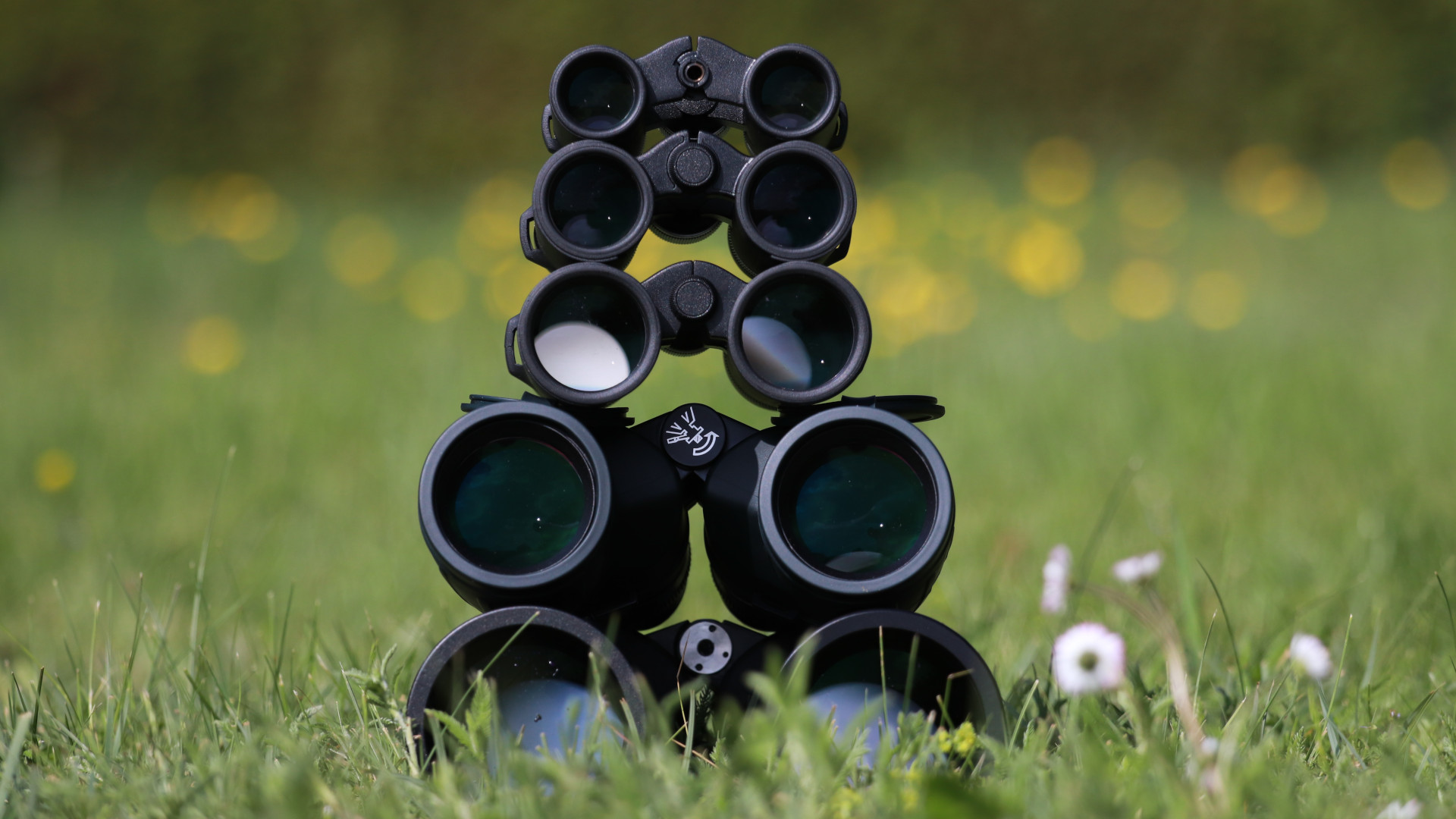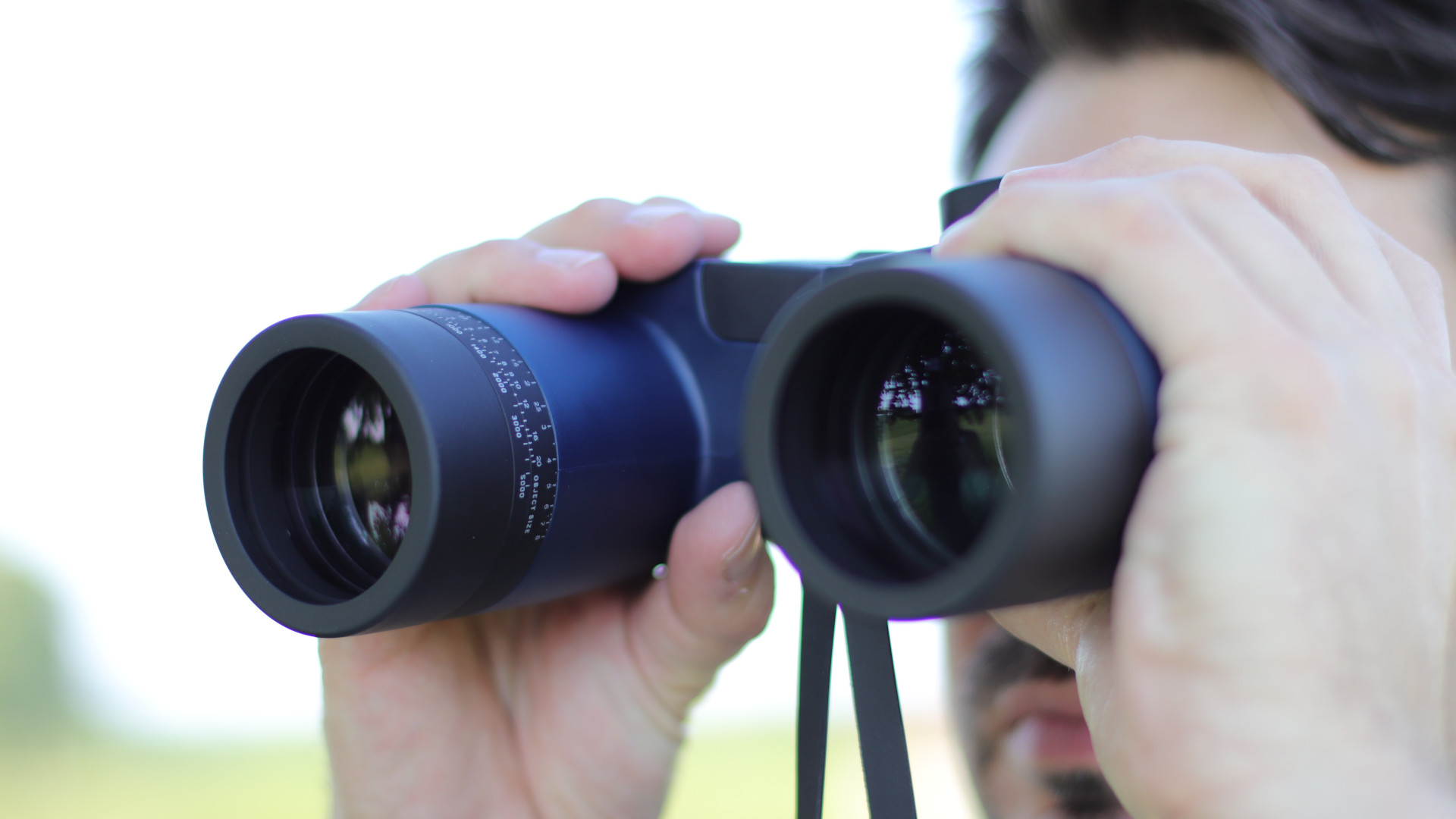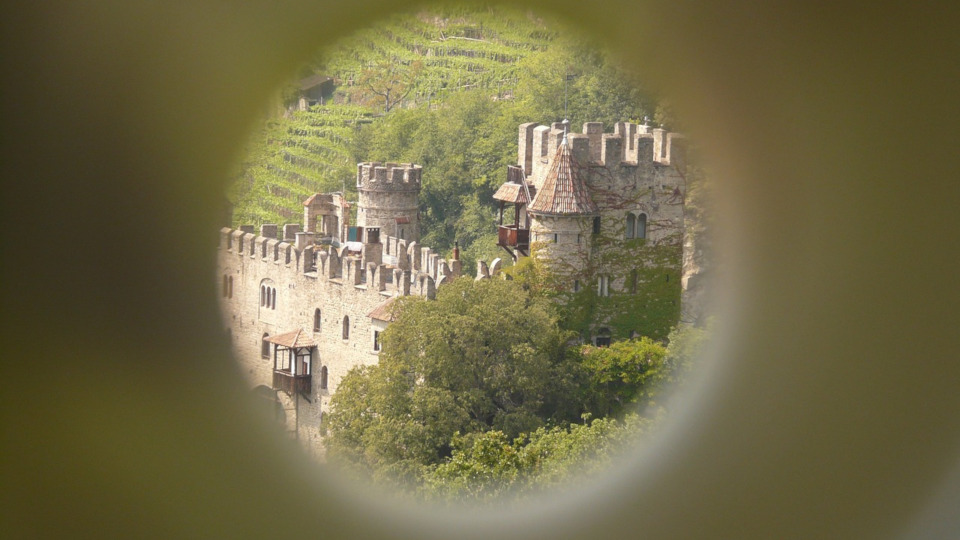Roof or Porro prism?
This has nothing to do with architecture: the unbeatable advantages of the classic Porro and the more modern roof prism construction types.
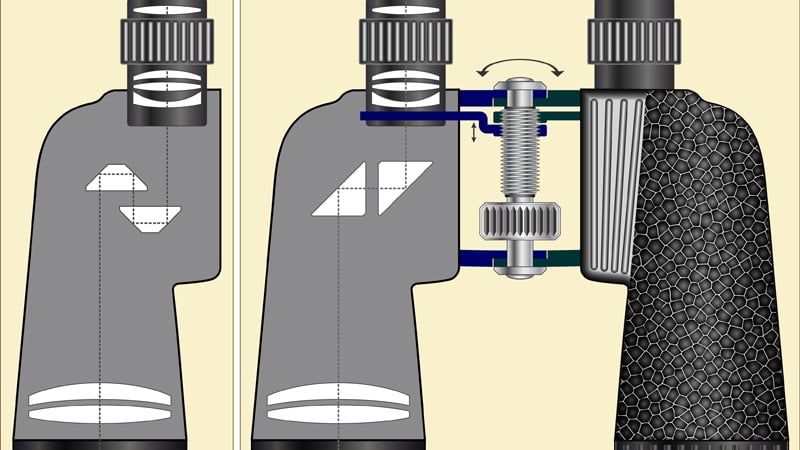
Don't worry, we are not talking about the architectural features of monumental buildings. Roof and Porro are two different prism systems used in the manufacture of binoculars.
What is the difference between Porro prism and roof prism binoculars?
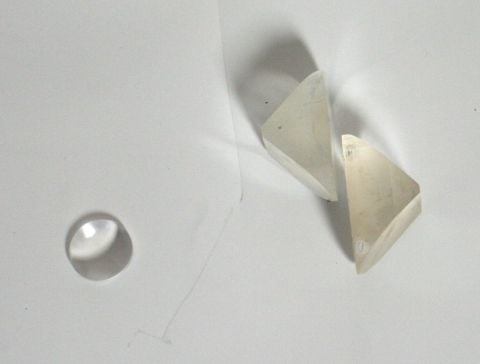
The difference between Porro prism and roof prism binoculars is primarily the different prism systems used in order to correct the inverted image produced. These are, as the name indicates, Porro prisms or roof prisms. To put it simply, the light path in Porro prisms has a rectangular shape, whereas the light in roof prisms follows a triangular path in the shape of a house roof.
Meanwhile, roof prism binoculars are somewhat more popular than Porro binoculars. The appearance of the binoculars is quite different. The objective lenses in Porro binoculars are further apart than the eyepieces. The roof prism systems are more compact and more slender.
The reason for this is the different prism designs. Porro prisms have a relatively bulky form. The advantage of Porro prism binoculars is that you get a three-dimensional image impression. Porro binoculars have an external focus wheel, whereas roof prism binoculars have a internal focus worm. This focus mechanism is often preferred over that of the Porro binoculars, because it is often more stable and better protected against moisture.
Generally, it is difficult to say which binoculars are most suitable. Of the two construction types, there are good and not so good binoculars. However, it is considerably more complex to manufacture good roof prism binoculars, therefore you should keep a particularly watchful eye in the low-price segment and seek advice.
Porro binoculars
Traditional and tried-and-tested binoculars have Porro systems. This was the first type of prism to be used in the production of binoculars. They are named after the designer Ignazio Porro. Here two prism segments are used, which correct the image using total internal reflection by deflecting the light path by 180° per segment. At the boundary surfaces of the prisms, the light ray is not broken, but instead reflected at a specific angle of incidence. A typical characteristic which makes Porro binoculars recognisable is the offset eyepieces and objective lenses. Their advantage is that they produce a very three-dimensional visual image.
Roof prism binoculars
The second type is known as roof prism binoculars. This is a considerably more compact binocular design. This type of binocular has become more popular than the Porro version.
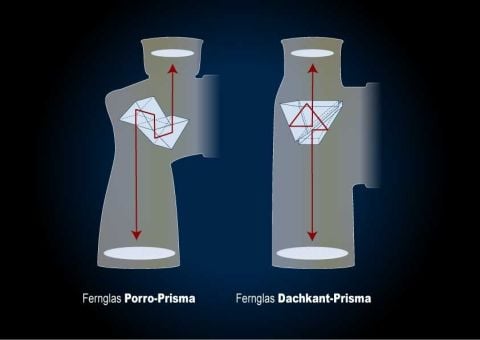
As the name indicates, the light path through the prisms forms a shape similar to a house roof. Which is how they came to be called "roof prism". In roof prisms the light is deflected by reflective coatings. At least one surface must be coated, either with a silver or dielectric coating. The light ray is reflected in five places, until it reaches the eyepiece. It is considerably more complex to manufacture a good roof prism system, since the light loss on the reflective surfaces must be kept as low as possible. Sometimes so-called Abbe-König prisms are used, here the surfaces do not need to be coated.
The binoculars user does not usually come face-to-face what is happening inside
Two prisms which provide an upright image are concealed inside roof prism binoculars. On the left side of the illustration is the eyepiece lens, on the right side is the objective lens.
Another effect that is only seen in roof prisms is that the light phase shifts due to the reflection path taken through the prisms. The light is, as it were, split into two parts. The peaks and troughs of the light waves offset one another. This weakens the light intensity, reduces the resolving power, produces interference effects and the image contrast can suffer.
Porro and roof prism binoculars have very different designs. The main reason for this is the way the prisms are arranged. This means that roof prism binoculars have a much more compact design. The light path follows the form of the roof of a house.
A phase correction coating is applied in high-quality roof prism binoculars, which re-combines the phases. In principle, Porro and roof prism binoculars can deliver the same imaging performance, depending on the price.
Recommended Porro and roof prism binoculars
